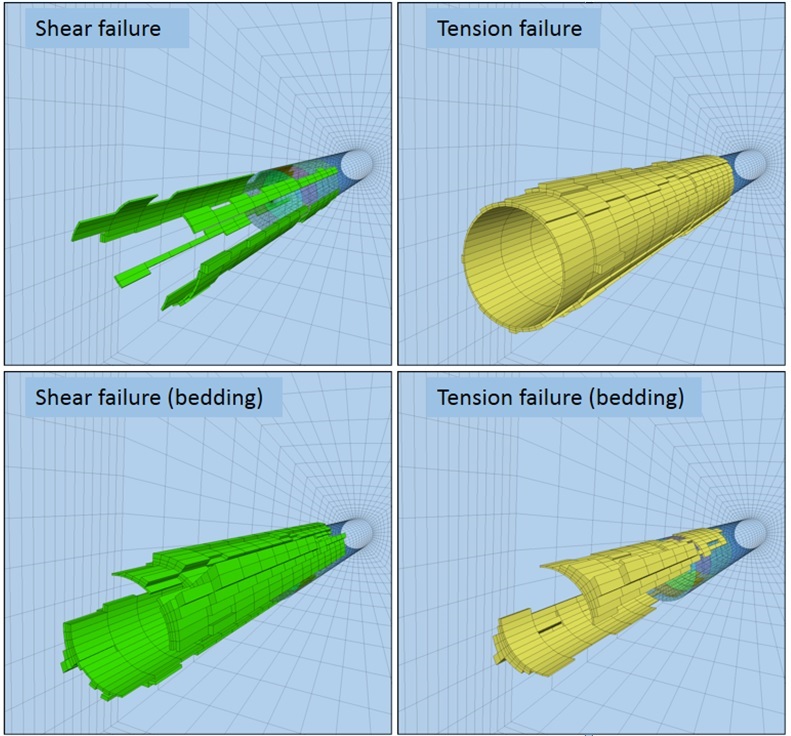numerical characterization of the Excavation damaged zone in the hg-a experiment
The performance of the natural barrier system in many proposed deep geological repositories is dependent on low permeability in the natural rocks at the proposed sites. Construction activities will likely increase the permeability of rocks near underground openings due to excavation damage. The HG-A experiment examined gas and water flow in the excavation damage zone (EDZ) of a tunnel in a claystone formation at the Mont Terri Rock Laboratory. EDZ permeability was affected by swelling of the damaged rock in the presence of water, hydromechanical coupling due to changes in pore pressure and confining stress, and leakage of fluids along the packer-rock interface caused by low effective stress. T2GGM-FLAC was developed as a numerical tool capable of simulating these processes. This coupled two-phase flow and geomechanical model were used to predict the development of excavation damage (plastic deformation) around the HG-A tunnel, and then model the EDZ permeability variation as a function of time (self-sealing), packer pressure (hydromechanical coupling), and anisotropic mechanical properties of the host rock. The distribution of damage around the HG-A tunnel predicted by the model corresponded well to available measurements of damage from laser scans of the tunnel walls post-excavation. A short paper summarizing this project is available here.

© Copyright – Geofirma Engineering Ltd. | 200-1 Raymond St., Ottawa, ON K1R 1A2
